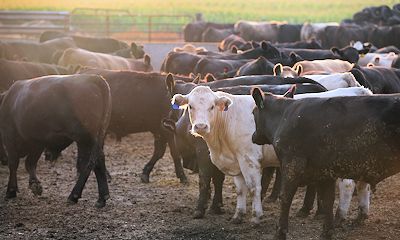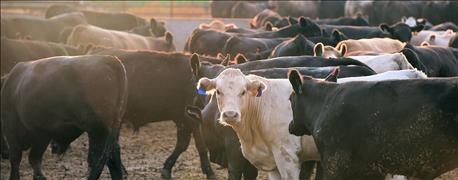August 30, 2016

The fall season signals cooler weather, but it also brings the greatest incidence of Bovine Respiratory Disease (BRD) and producers need to take steps now to weather the BRD storm. BRD is a major problem for cattle and continues to cause serious economic losses for producers, causing up to $1 billion in losses each year in the United States alone.
“Understanding BRD and what causes it can help producers make informed decisions about the health and welfare of their animals, whether that involves using immunostimulants, vaccines or antibiotics,” says Jim Sears, senior technical services veterinarian, Bayer Animal Health.
What is BRD?

BRD is a major problem for cattle and continues to cause serious economic losses for producers, causing up to $1 billion in losses each year in the United States alone. (Photo: Scott Olson/Thinkstock)
BRD is an infection of the lungs that causes pneumonia in cattle and may be more prominent in recently weaned or nursing beef calves, feedlot cattle and housed dairy calves. In some cases, it can be responsible for up to 80% of the illness in feedlots. Several factors can play a role in causing the disease, including:
-Stress due to dust, transporting, poor nutrition, weaning, handling, commingling and overcrowding.
-Infectious agents such as viral and bacterial pathogens.
How can producers monitor for BRD?
It’s important for producers to monitor the health management of the herd. Early detection and treatment of BRD is essential. Efforts can include:
-Reducing stress: Evaluate all possible causes for stress on the cattle and determine which ones can be decreased or eliminated.
-Avoid processing, weaning or shipping cattle in bad weather
-Ensure animals have sufficient water and feed access
-Provide animals plenty of dry, clean bedding to prevent damp and dirty conditions
Should producers pre-treat?
Producers should vaccinate calves before three months of age to decrease the likelihood of disease outbreak. Also, animals that have been shipped and processed may benefit from use of an immunostimulant
How do you spot BRD?
Observe calves daily for signs of BRD or other ailments. The most common signs are nasal and eye discharges, coughing, fever, decreased appetite, breathing difficulty, rapid breathing and depression.
What should producers do once an animal shows signs of BRD?
While it’s important to mitigate BRD, sometimes it is necessary to treat the disease. Producers should determine their treatment protocol to effectively treat the disease. Antibiotics such as Baytril 100 (enrofloxacin) Injectable deliver a reliable, cost-effective treatment option. Baytril 100 is a sterile, ready-to-use injectable antimicrobial solution that contains enrofloxacin, a broad-spectrum fluoroquinolone that kills the four major BRD-causing bacteria. Its unique mode of action kills the control center of BRD-causing bacteria.
Source: Bayer Animal Health
You May Also Like




